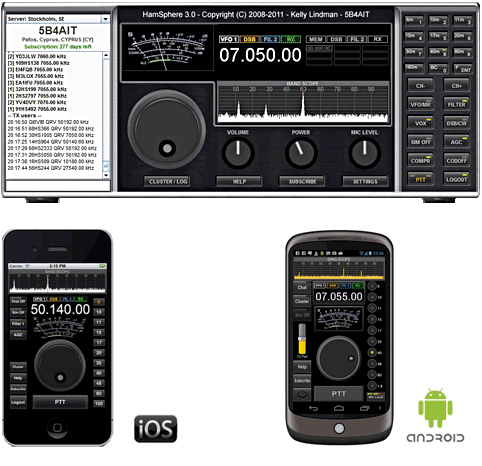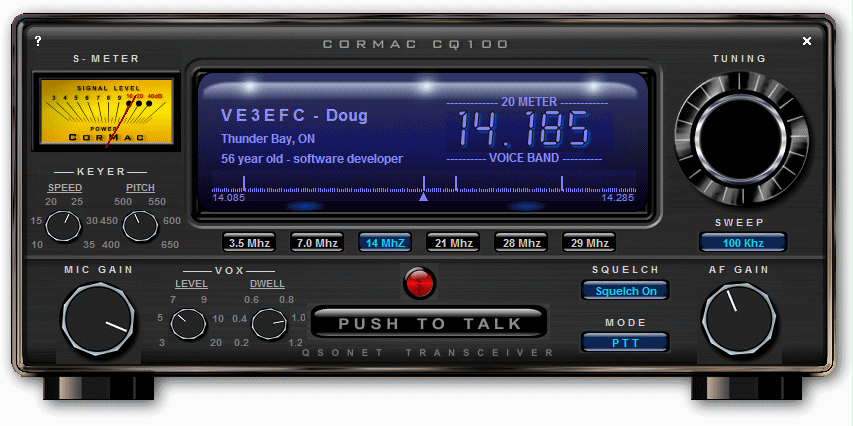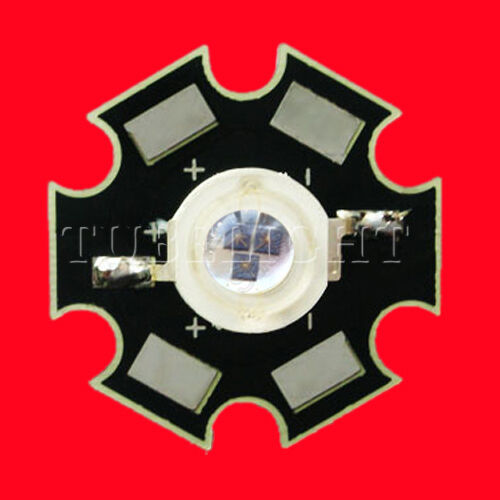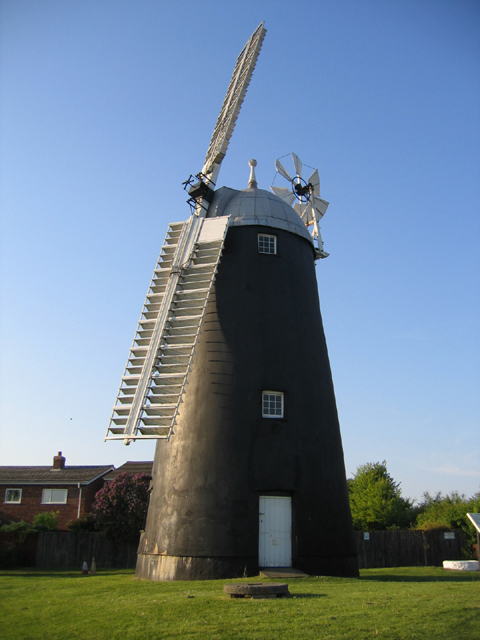At the moment I'm still pondering the bands to try at my new QTH in a few months from now. One possibility is 23cms, a band I have never used on TX.
One consideration at the new QTH is antenna (non) visibility and I am anxious to go for "neighbour acceptable" solutions on all bands. For 2m SSB/CW/data I am still minded to use a couple of stacked big-wheel antennas giving around 5dBd horizontal gain. Up above the apex of the roof, this should soon be lost being not that much bigger than a TV yagi. The partly vertical feeder to this will load up on the HF bands as a nice stealth antenna: I have used the coax to my 10m halo as a very effective HF antenna, even on 472kHz despite being only a few metres long.
But what about 23cms? Maybe to just get on the band simply and with an unobtrusive antenna the Alford slot is worth a try? If I understand correctly, these give an omnidirectional horizontally polarized signal with around 10dBd gain. Placed at the top of the mast, maybe above the big-wheel and inside a PVC pipe as a radome, and fed with low loss coax (or with the transverter up near the antenna) this might be enough to work the locals during UKAC contests. Alford slots are popular for 23cm beacons and ATV, so why not for local 23cm SSB/CW activity or for weak signal data modes?
Another possibility would be a big-wheel (or should it be tiny wheel?) on 23cms. This would be about 12cms across only!
The photo above was from an eBay item which sold for around £130 back in April. Is anyone aware of commercially available 23cms horizontal omni-directional antenna?
22 Apr 2013
Virtual amateur radio systems
 |
| http://www.hamsphere.com |
 |
| www.qsonet.com |
Huge leap in rechargeable battery technology?
The ExtremeTech website has reported a possible major major (i.e. game changing) breakthrough in Li-Ion battery technology with the headlines: New lithium-ion battery design that’s 2,000 times more powerful, recharges 1,000 times faster
If this turns out to be technology that can indeed be commercialised, then just imagine the possibilities: (1) electric cars with far lighter batteries, or electric car batteries with much greater range, (2) mobile phones with tiny batteries that can be charged in a minute or so, (3) portable HF transceivers that are half the weight of the FT817 but with batteries that last for days between charges.
It all sounds just a bit too good to be true, but I am sure this was no April Fool's joke.
 |
| http://www.extremetech.com/wp-content/uploads/2013/04/ncomms2747-f3.jpg |
It all sounds just a bit too good to be true, but I am sure this was no April Fool's joke.
Labels:
battery,
extremetech,
lithium battery,
lithium ion
20 Apr 2013
Optical communications in the 19th century
With the recent upsurge in interest in long range optical communications it is easy to forget that optical data communications over long distances predates radio communications by many years. In those far-off days the data was morse code and the light came from the sun in the form of a heliograph mirror that reflected the sun's rays over long distances in daylight. Keying was usually by tilting the mirror or by keying a grill placed in front of the mirror. See http://www.modulatedlight.org/Modulated_Light_DX/Heliograph.html . Best DX achieved in the 19th century was well over 200km using these methods!
Labels:
helio
Infra-red "over the horizon" tests?
Reading Stuart G8CYW's article on the history of optical communications in the latest RadCom, I am considering repeating my recent NLOS optical test using infra-red (IR) rather than visible light as there may be some advantages with clear air forward scatter propagation by going to lower near optical frequencies. At least IR beams are not visible to the casual viewer, so are less likely to create problems. However, IR can be more dangerous than visible light because the blink reaction that occurs with visible light does not happen. When using high power IR LEDs it is therefore even more important not to look into the beam and to take care where the beam is aimed, especially at close range. Never ever look into the beam at close range.
A suitable IR PIN diode is the SRH203-FA from Osram, widely available on eBay. As you can see from the image, the PIN diode detector has IR filtering (black colour) , so may be usable in daylight with less degradation than would be the case with red LEDs. I already use the SRH213 PIN diode for visible red optical comms.
 I am looking for a suitable 1W-3W IR LED and they are available, but I have yet to find one in the 10mm "fat" standard LED package that I use currently on 481THz.
I am looking for a suitable 1W-3W IR LED and they are available, but I have yet to find one in the 10mm "fat" standard LED package that I use currently on 481THz.
There are 3W IR LEDs available from China that should be suitable. See eBay item 370784927290 for example in the star package. This would be some 10dB more output than I currently use, although I am not sure of the beam divergence which may be greater than with the 10mm package.
Nanowave over-the-horizon experiments are very much like microwaves, except that the test equipment is a GREAT deal simpler!
A suitable IR PIN diode is the SRH203-FA from Osram, widely available on eBay. As you can see from the image, the PIN diode detector has IR filtering (black colour) , so may be usable in daylight with less degradation than would be the case with red LEDs. I already use the SRH213 PIN diode for visible red optical comms.
There are 3W IR LEDs available from China that should be suitable. See eBay item 370784927290 for example in the star package. This would be some 10dB more output than I currently use, although I am not sure of the beam divergence which may be greater than with the 10mm package.
Nanowave over-the-horizon experiments are very much like microwaves, except that the test equipment is a GREAT deal simpler!
13.8V distribution board
 |
| http://www.hamradio.co.uk/sysimages/origimages/PW-100-1_pr5198_1.jpg |
I see that Martin Lynch sell a Mydel PW-100 4-way distribution board with fuses on each output. Although a similar unit could easily be built, this is not a bad price for a ready-made unit complete with spare connectors at around 30 pounds.
When arranging my new shack I shall have to either buy one of these or make up something similar.
Labels:
martin lynch,
mydel,
pw-100
A walk in the sunshine with the Ventus GPS tracker
As the weather was so beautiful this afternoon (full sun and around 13 deg C) I decided to do a country walk and track my progress using the Ventus GPS data logger bought from Martin Lynch and Sons. The walk was 10.7km and took about 2hrs 34 minutes with a couple of relaxing breaks for a drink and a snack. No ham radio gear was taken this time, because I forgot to charge up my VX2 handheld. Next time, HI. Incidentally Quy was where my optical beacon reached (over the horizon) a few weeks ago. When you walk that far it seems a VERY long way away!
This is a plot of the walk taken with the low cost GPS tracker then plotted with Google Earth.
This is a plot of the walk taken with the low cost GPS tracker then plotted with Google Earth.
 |
| Today's walk in the Cambridgeshire countryside |
Labels:
martin lynch,
ventus g730,
walk
My wife's choral concert next weekend in Cambridge
 |
| Concert Poster |
19 Apr 2013
Loopy on 10m - first results
This afternoon I managed to catch 10m open and got some excellent spots from 4X1RF with reports as good as -5dB S/N using 2.5W to the small magnetic loop taped to the chair in the bedroom shack. Without doing too scientific a test, the impression I get is the loop is every bit as good as the external longwire end-fed antenna in the garden.
I may move the magnetic loop up into the loft in the coming days to see how it performs there, pre-tuned to the WSPR frequency. Based on results in the bedroom, I would expect it to work well.
Labels:
loop loopy 10m wspr
VHF/UHF take-off at new QTH
This evening I went up to our new, well being newly renovated, bungalow on top of our local "hill" immediately next to the Burwell windmill.
Currently the roof is being re-tiled and there was scaffolding everywhere, so I took the opportunity to climb up a ladder to the roof level to judge the VHF/UHF take-off.
Well, the good news is that even at just above the gutter level there is an excellent virtually unbroken (clear of houses) take-off from the north west all the way around to the south. With an antenna a few metres above the roof apex height, it should have a pretty good take-off in most directions. It just begs me to get some better gear for the 2m, 70cm and possibly 23cm and 3cm bands. We'll see.
I was also checking out optical communications possibilities. At lower heights, the horizon view is obstructed, but I should be able to arrange my optical beacon for cloud-bounce and clear air forward scatter, non line-of-sight, tests with the beacon firing up at around 20 degrees up from horizontal in many directions out towards Cambridge and beyond.
Currently the roof is being re-tiled and there was scaffolding everywhere, so I took the opportunity to climb up a ladder to the roof level to judge the VHF/UHF take-off.
Well, the good news is that even at just above the gutter level there is an excellent virtually unbroken (clear of houses) take-off from the north west all the way around to the south. With an antenna a few metres above the roof apex height, it should have a pretty good take-off in most directions. It just begs me to get some better gear for the 2m, 70cm and possibly 23cm and 3cm bands. We'll see.
I was also checking out optical communications possibilities. At lower heights, the horizon view is obstructed, but I should be able to arrange my optical beacon for cloud-bounce and clear air forward scatter, non line-of-sight, tests with the beacon firing up at around 20 degrees up from horizontal in many directions out towards Cambridge and beyond.
Subscribe to:
Comments (Atom)




